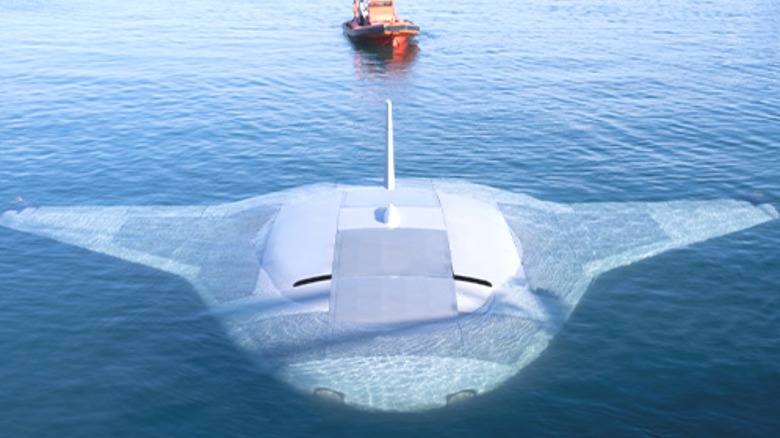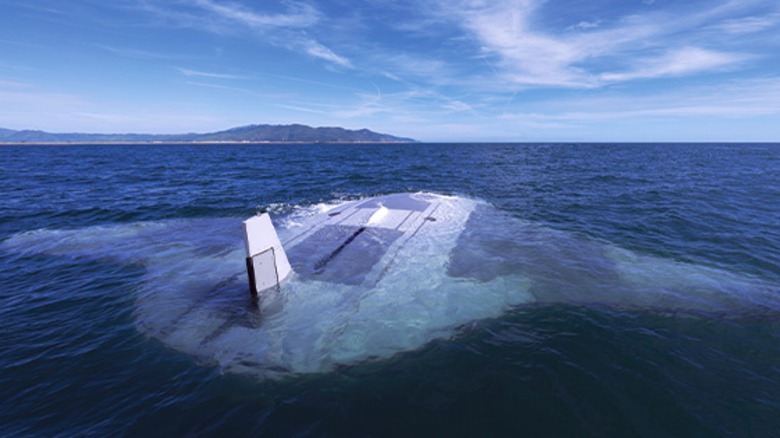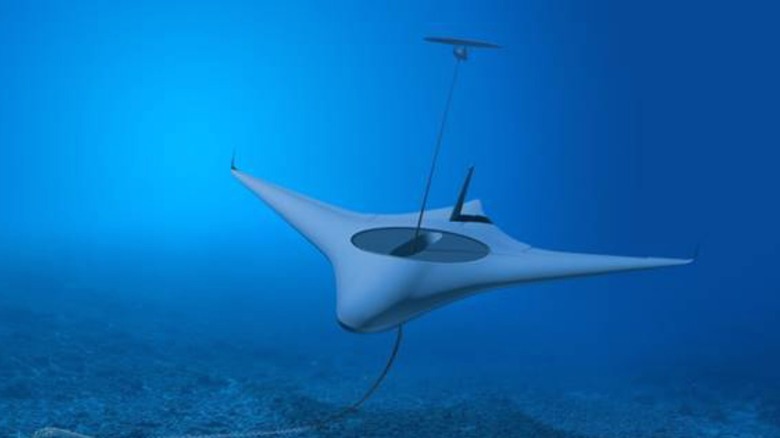What Is Northrop Grumman's Underwater Manta Ray Drone?
The 21st century has become the century of drone warfare, as the technology to pilot drones to distant battlefields and destroy targets becomes an ever-increasing option for the world's militaries. Most people likely think of hunter-killer drone aircraft like the MQ-1 Predator or MQ-9 Reaper when discussing drone warfare, but that's only one small part of how drones have reshaped the battlespace. In addition to unmanned aerial vehicles (UAV), there are unmanned ground vehicles (UGV) and semi-autonomous watercraft.
Ukraine's use of naval drones helped it destroy a large chunk of the Russian Black Sea fleet without possessing a single naval vessel. This demonstrated the effectiveness of using a relatively inexpensive drone against large surface ships, which has changed how countries use their massive vessels against seemingly innocuous, smaller craft. Ukraine isn't the only nation developing this nascent technology; the U.S. is busy doing the same.
In April 2024, Northrop Grumman revealed the development of an extra-large unmanned underwater vehicle (UUV) called the Manta Ray. A month later, images of the Manta Ray surfaced, and its name is an apt description of what it is, as its shape bears a distinct likeness to the sea creature. Outside its appearance, Northrop Grumman released some information about its planned and current capabilities, giving the world an idea of what subsurface and surface naval combat has in store in the near future.
The Manta Ray's capabilities
Development of the Manta Ray began in 2020 when the Defense Advanced Research Projects Agency (DARPA) announced it tapped four companies to work on the program. By May 2024, Northrop Grumman took the lead and may provide the Department of Defense with its next UUV. Details on the vessel's capabilities aren't available to the public outside of the scant information Northrop Grumman provided. That said, some elements of its design suggest its planned capabilities once it's utilized in a real-world environment.
The Manta Ray's design aims for long-endurance unmanned missions anywhere in the world. It can carry a payload, though the types of payloads aren't known. Additionally, the Manta Ray is almost entirely autonomous, suggesting the U.S. Navy could use it to loiter and gather intelligence on subsurface and surface activities wherever it's deployed. Additionally, it can anchor itself to the sea floor, reducing power consumption.
The Manta Ray is modular and can be broken down and shipped in five standard shipping containers so that it can be sailed or flown to an area for deployment. One fascinating feature involves harvesting energy with help from the motion of the ocean. The Manta Ray can theoretically anchor itself to the ocean floor and extend a cable that it uses to propel an energy harvesting pod up and down to generate energy, channeling it into the onboard rechargeable lithium batteries.
Why the U.S. Navy wants the Manta Ray
The development of UUVs is nothing new, and navies and universities have worked on the technology since the 1950s. What is new is the technology that makes operating these types of vehicles relatively inexpensive and exponentially favorable for the Navy. Ideally, the Manta Ray will be able to enter a targeted area and remain undetected with little to no power usage for extended periods of time. This allows it to do everything from providing research to target acquisition data.
This makes the concept of such a UUV incredibly desirable for the U.S. Navy and other militaries worldwide. Developing the Manta Ray is merely the next step in producing and procuring technology that will keep the U.S. Navy as the preeminent organization with blue water supremacy everywhere in the world. That said, the Manta Ray will likely not be used for direct engagement combat — it theoretically could, but its design isn't indicative of that kind of operation.
Instead, it will likely function as a combat multiplier, providing the time-sensitive intelligence the military needs to ensure its dominance in any part of the world. Its shape takes advantage of something nature and evolution perfected long ago. Hence, the Manta Ray is truly the next step in underwater vessel development, and it is likely to change the basic design of similar underwater ships in the future.


